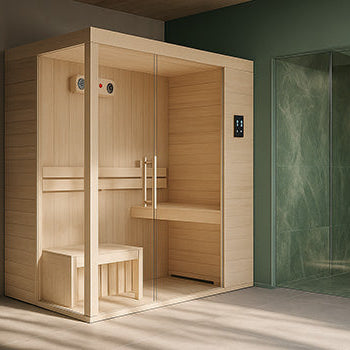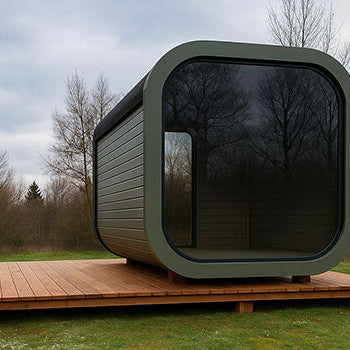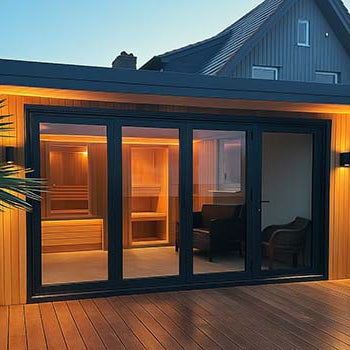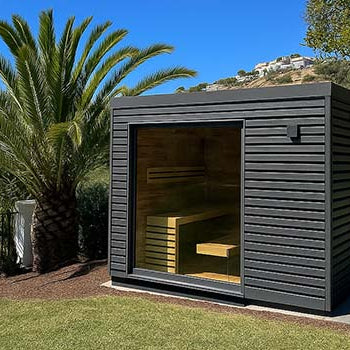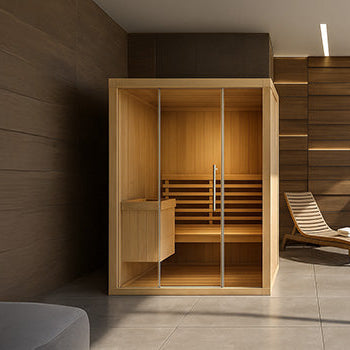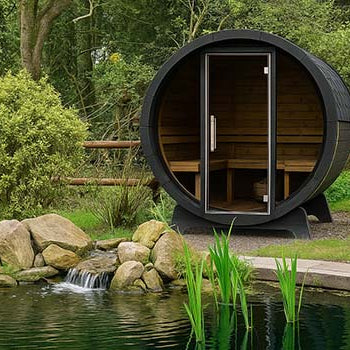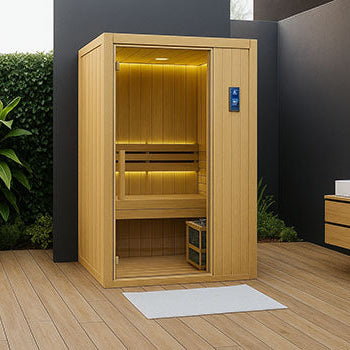Ever wondered why sitting in a hot wooden box feels strangely amazing?
Short answer: Saunas work by heating your body until it sweats, and that sweat does wonders.
From indoor setups that feel like a private retreat to backyard outdoor sanctuaries under the stars, it’s all about combining heat and relaxation.
The science behind that warm, fuzzy glow? Pretty fascinating.
Stick around—you’ll learn why sweating it out is one of the simplest ways to feel better fast.

How Do Saunas Work? Understanding the Science of Heat
At their core, saunas are about controlled heat. Not just any heat, but the kind that gently pushes your body to respond.
The goal? Raise your body temperature to trigger a natural reaction: sweat, circulate, recover.
People have used saunas for centuries, from snow-covered Finland to slick spa rooms in London. And while the setups have changed, the principle remains the same: apply heat, get the body working, feel amazing afterwards.
Let’s dig into what’s happening behind the scenes.
The Basic Principle: Creating Heat to Elicit Body Responses
Saunas are designed to simulate a mild form of stress, thermal stress.
When you step inside, the heat raises your skin temperature first, then your internal temperature follows.
This prompts your body to cool itself by sweating and sending more blood to the skin.
It’s not just about getting sweaty for fun. That sweat carries toxins away, cools your body, and signals your systems to wake up and work.
Think of it like a mini workout—without moving a muscle.
Traditional Saunas (Finnish, Electric/Wood-Fired)
Walk into a traditional sauna, and you’ll smell warm wood and feel that dry, comforting heat.
These are the OGs of the sauna world—simple, powerful, and rooted in tradition.
They come in a few types, but the setup is usually the same: wood panels, a heater, and a bucket of water.
Explore our range of traditional indoor saunas and traditional outdoor saunas for that authentic sauna experience.
Heating Mechanism: Stove Heats Rocks, Rocks Heat Air
In traditional saunas, a stove—either electric or wood-burning—heats a pile of special stones.
These stones then radiate heat throughout the room.
It’s a slow build-up of warmth that eventually fills every corner.
Wood-fired options bring a rustic vibe and natural aroma. Electric models are faster, cleaner, and easier to control.
Heat Transfer: Convection (Hot Air Heats Body)
Once the rocks are hot, they heat the surrounding air.
That hot air rises and circulates, creating a dry, even heat that wraps around your whole body.
This is called convection heat—it works like a warm blanket that slowly raises your core temperature.
It’s a full-body experience, and for many, the ritual is just as important as the result.
The Role of Steam (Löyly): Adding Humidity and Intensity
Now comes the fun part—löyly.
That’s the name for the steam cloud that rises when you throw water on the hot rocks.
It hits you like a warm wave—brief, intense, but satisfying.
The room’s humidity spikes, the air feels thicker, and the heat gets deeper.
This contrast is what makes Finnish saunas so dynamic and invigorating.
Infrared Saunas: A Different Approach to Heating

Not a fan of stifling hot air? You’re not alone.
Infrared saunas bring the heat—but in a totally different way.
They look modern, run cooler, and are often used indoors for home wellness routines. Think sleek spa corner in your flat or a private room in your gym.
Discover our infrared indoor sauna collection or try something unique with our infrared outdoor saunas.
Heating Mechanism: Infrared Emitters (Panels/Lamps)
Instead of heating the air, infrared saunas use panels or lamps that emit infrared light.
This light warms your body directly, like sunlight without the UV rays.
You don’t feel the room heat up much, but you’ll start sweating just the same—maybe even more.
Heat Transfer: Radiant Heat Directly Warms the Body
The magic here is radiant heat.
Infrared waves penetrate your skin and warm your muscles from the inside out.
There’s no hot air to breathe in or steam to sit through. It’s a gentle, more targeted kind of heat, often preferred by people sensitive to high temperatures.
How Infrared Differs from Traditional Heat (Lower Air Temp)
Traditional saunas crank the air temp up to 80–100°C.
Infrared saunas? Much lower—typically around 45–60°C.
That’s part of the appeal: you get the same benefits without feeling overwhelmed.
You can stay in longer, relax more, and enjoy the heat without the blast-furnace vibe.
Steam Rooms (Wet Saunas/Turkish Baths)
Steam rooms are sauna cousins with a twist.
Instead of dry heat, they deliver a cloud of hot, moist air.
Picture a warm fog wrapping around you, relaxing every inch.
Heating Mechanism: Steam Generator Fills Room with Hot Vapor
These spaces are sealed and tiled to hold in moisture.
A hidden steam generator pumps in thick, hot vapour that quickly fills the space.
Within minutes, you're enveloped in heat that feels like a warm, humid embrace.
Characteristics: High Humidity, Moderate Temperature
Temperatures in steam rooms don’t go as high—around 40–50°C—but the humidity is nearly 100%.
This makes the air feel denser, and the heat can feel even more intense than in a dry sauna.
It’s perfect for those who like moisture, open pores, and skin that feels like silk after.
How Your Body Reacts to Sauna Heat

Here’s where the science gets exciting—your body doesn’t just sit there. It works.
From sweating buckets to hormonal shifts, each session sets off a chain of changes that benefit your health.
Triggering the Sweating Response (Thermoregulation)
The moment heat hits your skin, your brain kicks into action.
It opens sweat glands, cools your body down, and flushes out toxins.
That glistening sweat? It’s your body’s way of cleansing itself.
Sauna sweat tends to come from deeper layers, making it different from regular heat sweats.
Increased Heart Rate and Blood Circulation (Vasodilation)
As your temperature climbs, your blood vessels expand (vasodilation).
This improves circulation and raises your heart rate, much like gentle cardio.
Over time, regular sauna sessions may help with cardiovascular health and oxygen flow.
Relaxation and Hormonal Responses
There’s a reason you feel so mellow after a sauna.
The heat helps lower cortisol (your stress hormone) and may even boost feel-good chemicals like endorphins.
It’s like your body saying, “Ahh, finally.”
Comparing How Different Saunas Achieve Their Effects
-
Traditional saunas heat the air, using dry or steamy heat to boost sweat and circulation.
-
Infrared saunas warm you from the inside out, using lower temperatures for deep tissue effects.
-
Steam rooms focus on moist heat, creating a spa-like, skin-loving atmosphere.
You’ll find a wide variety to choose from in our indoor sauna, outdoor sauna, and barrel sauna ranges.
Conclusion: Harnessing Heat for Health and Relaxation
Now you know what’s behind that blissed-out, post-sauna feeling.
Whether it’s an outdoor sauna under the stars or an infrared indoor cocoon, the goal stays the same: sweat, recover, repeat.
Different saunas suit different lifestyles, but the wellness benefits? Pretty universal.
Better circulation, lower stress, glowing skin—it’s a no-brainer once you get into the rhythm.
Just start slow, stay hydrated, and listen to your body.
Because when used right, sauna sessions aren’t just relaxing—they’re a lifestyle upgrade.
